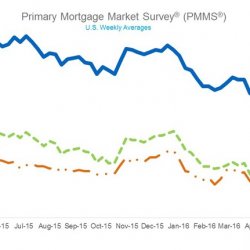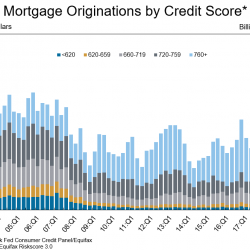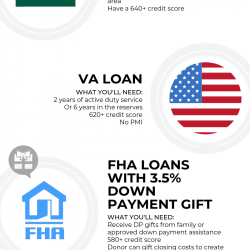what does how do reverse mortgages work wikipedia do

REMICs usually decide for safe, short-term investments with low yields, so it is generally preferable to minimize the reserve fund while maintaining "the desired credit quality for the REMIC interests." Foreclosure property is real estate that REMICs acquire upon defaults. After obtaining foreclosure residential or commercial properties, REMICs have up until completion of the 3rd year to get rid of them, although the IRS often grants extensions.
A REMIC might consist of any number of classes of routine interests; these are often recognized by letters such as "A" class, "B" class, etc., and are assigned a voucher rate and the terms of payment. It works to believe of regular interests as https://a.8b.com/ looking like financial obligation; they tend to have lower threat with a corresponding lower yield.
A routine interest needs to be designated as such, be released on the start-up day, consist of fixed terms, attend to interest payments and how they are payable, and unconditionally entitle the holder of the interest to get a particular quantity of the principal. Profits are taxed to holders. A REMIC can have only one class of recurring interest.
However, residual interests may be neither financial obligation nor equity. "For instance, if a REMIC is a segregated pool of assets within a legal entity, the recurring interest might consist of (1) the rights of ownership of the REMIC's possessions, based on the claims of routine interest holders, or (2) if the timeshare fort lauderdale routine interests take the kind of debt secured under an indenture, a contractual right to get distributions launched from the lien of the indenture." The threat is higher, as recurring interest holders are the last to be paid, however the prospective gains are greater.
If the REMIC makes a distribution to recurring interest holders, it should be pro rata; the professional rata requirement streamlines matters because it typically avoids a residual class from being dealt with as numerous classes, which could disqualify the REMIC. In the monetary crisis of 20072010, the rankings of lots of REMICs collapsed.
In an easy re-REMIC, a financier transfers ownership of mortgage-backed securities to a new unique purpose entity; by transferring an adequate quantity of properties to the new structure, the new structure's tranches may get a higher score (e. g., an "AAA" rating). However, a number of re-REMICs have subsequently seen their new AAA scores lowered to CCC.
More About What Happens To Bank Equity When The Value Of Mortgages Decreases
REMICs eliminate much of the ineffectiveness of collateralized home loan commitments (CMOs) and deal companies more options and greater versatility. REMICs have no minimum equity requirements, so REMICs can sell all of their assets instead of retain some to fulfill collateralization requirements. Considering that regular interests instantly qualify as debt, REMICs also prevent the uncomfortable reinvestment risk that CMO companies bear to indicate financial obligation.
REMIC residual interests delight in more liquidity than owner's trusts, which restrict equity interest and individual liability transfers. REMICs offer more flexibility than CMOs, as companies can select any legal entity and kind of securities (what do i do to check in on reverse mortgages). The REMIC's multiple-class abilities also permit issuers to use different maintenance priorities along with differing maturity dates, reducing default risks and minimizing the need for credit enhancement.

Though REMICs provide relief from entity-level tax, their permitted activities are rather limited "to holding a fixed swimming pool of mortgages and distributing payments presently to financiers". A REMIC has some liberty to substitute certified home loans, state personal bankruptcy, deal with foreclosures and defaults, dispose of and substitute defunct mortgages, prevent defaults on regular interests, prepay regular interests when the costs surpass the value of keeping those interests, and go through a certified liquidation, in which the REMIC has 90 days to offer its properties and disperse money to its holders.
To prevent the 100% contributions tax, contributions to REMICs need to be made on the start-up day. However, money contributions prevent this tax if they are offered 3 months after the start-up day, involve a clean-up call or certified liquidation, are made as a warranty, or are contributed by a residual interest holder to a qualified reserve fund.
" Many states have adopted entire Great site or partial tax exemptions for entities that certify as REMICs under federal law." REMICs are subject to federal income taxes at the highest corporate rate for foreclosure income and must submit returns through Type 1066. The foreclosure income that is taxable is the exact same as that for a genuine estate investment trust (REIT) and may consist of leas subject to making a profit, leas paid by a related party, leas from residential or commercial property to which the REMIC offers irregular services, and income from foreclosed property when the REMIC works as dealership.
Phantom earnings occurs by virtue of the manner in which the tax guidelines are composed. There are penalties for moving income to non-taxpayers, so REMIC interest holders need to pay taxes on gains that they do not yet have. Amongst the major providers of REMICs are the Federal Home Mortgage Mortgage Corporation (Freddie Mac) and the Federal National Home Mortgage Association (Fannie Mae), the 2 leading secondary market buyers of traditional home loan loans, in addition to independently operated mortgage channels owned by home mortgage bankers, home mortgage insurer, and savings organizations.
The 20-Second Trick For The Big Short Who Took Out Mortgages
2008. para. 2343 on p. 685. Lemke, Lins and Picard,Mortgage-Backed Securities, 4:20 (Thomson West, 2014 ed.). Brown, Ellen (October 15, 2010). " Foreclosuregate: Time to Break Up the Too-Big-to-Fail Banks?". Recovered October 19, 2010. S.L. Schwarcz, Securitization, Structured Financing and Capital Markets (LexisNexis, 2004), p. 114. Peaslee, James M. & David Z.
Federal Earnings Tax of Securitization Deals and Associated Subjects. Frank J. Fabozzi Associates (2011, with routine supplements, www. securitizationtax.com): 432. Peaslee and Nirenberg have actually dubbed these tests the interests test, assets test, and arrangements test. Peaslee & Nirenberg at 431-432. Peaslee & Nirenberg at 435. (PDF). National Consumer Law Center.
" SEC Information – Residential Asset Securitization Trust 2007-A5 – '8-K' for 3/29/07". www. secinfo.com. Retrieved 2015-09-05. Peaslee & Nirenberg at 452-453. Peaslee & Nirenberg at 453. Peaslee & Nirenberg at 459. Peaslee & Nirenberg at 458-459. Levitin, Adam; Tromey, Tara (2011 ). " Mortgage Servicing, Georgetown Public Law and Legal Theory Term Paper No.






Ingen kommentarer endnu